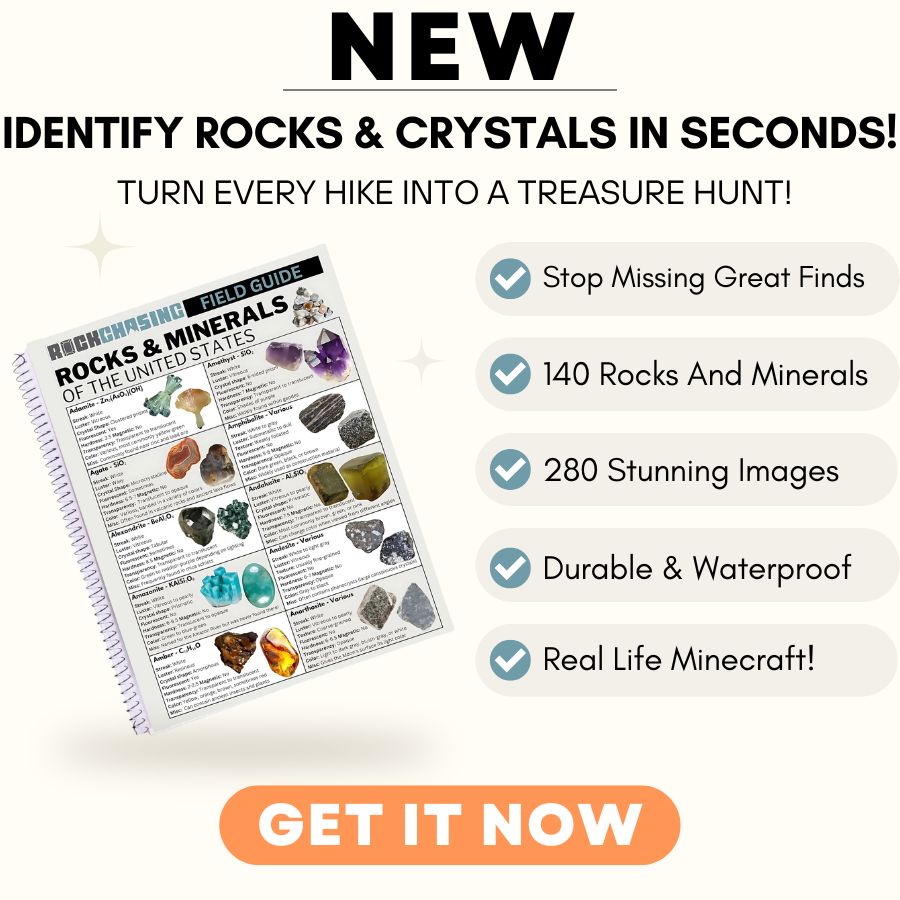The opal is a hidden gem that can be found in New Mexico, which is known for its beautiful scenery and rich cultural history.
The rough landscape of the Land of Enchantment is where you can find this valuable stone with its rainbow of colors. An opal from New Mexico can be any color or type.
For hundreds of years, people have praised these gems, and stories and folklore about them add to their charm.
Get ready to find the beautiful opal for yourself! This guide can help you find your way. We talk about the best places to look for opals in New Mexico and give tips for both new and experienced gem hunters.
Our guide will give you the information you need to find your own piece of New Mexico’s natural beauty. If you like opals and want to go on an exciting adventure, let’s go on this bright trip together!
What Is New Mexico Opal Anyway?
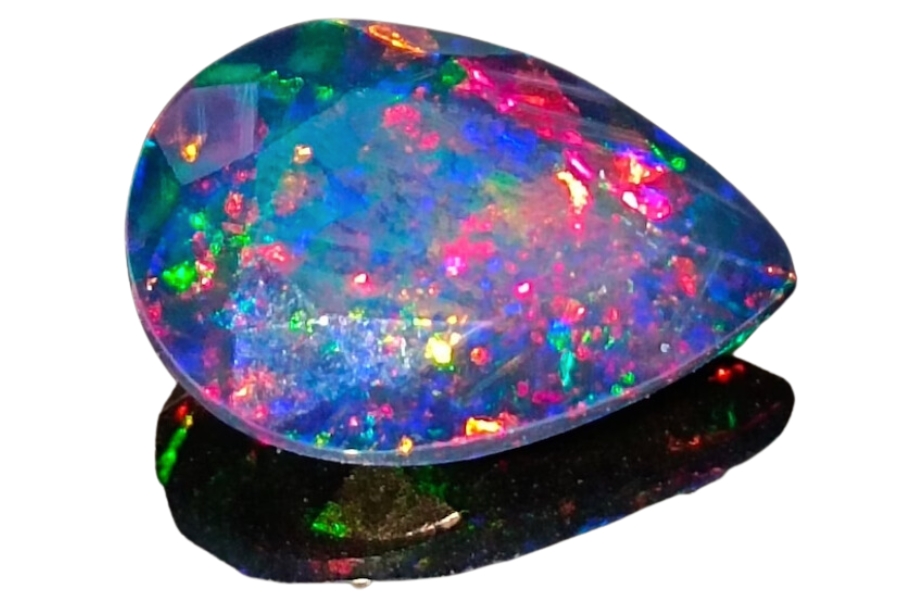
Opals are unique rocks that are unlike any other kind of gemstone. These are composed of silica, the same material that makes up sand, but they also contain water.
Because of this, opals sometimes have a jelly-like appearance, changing color as the stone moves in the light.
This amazing display of color is known as “play-of-color,” resulting from the silica and water within the opal being grouped in small, well-organized patterns. Similar to how a prism does its job, these patterns spread light into all the rainbow colors!
Opals are generally found in areas that have seen significant geothermal activity in the past, such as those near volcanoes. The value of an opal might vary depending on where it was discovered. Opals can be found anywhere in the world.
To help you further with your search, this guide will teach you how to find and identify opals more quickly.
The Types Of Opal Found In The US
There are several incredible types of Opal that can be found in the US as well as in our state. Each is uniquely beautiful and interesting including:
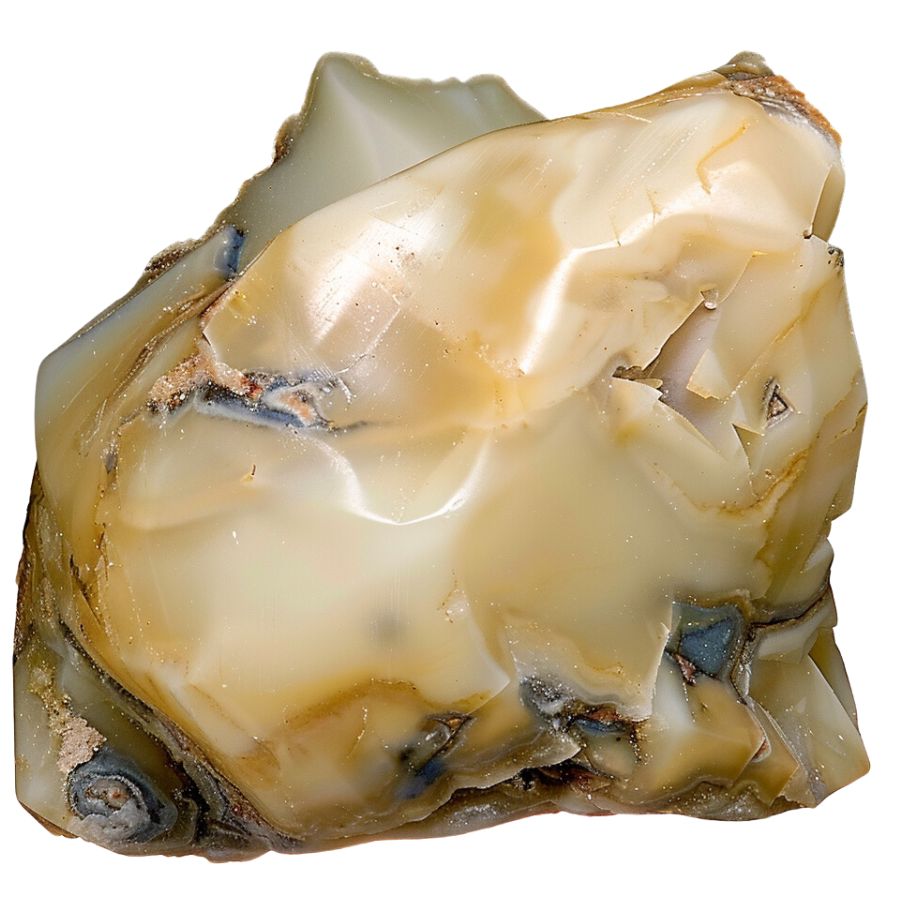
Common Opal
Common opal, also known as “potch,” stands out from other types of opal due to its lack of play-of-color, the iridescent display seen in precious opal. Instead, common opal features consistent, solid colors like white, pink, yellow, green, and blue.
It typically has a waxy to pearly luster and ranges from opaque to translucent. To identify common opal, look for its uniform color and absence of the shimmering color flashes found in precious opal.
Common opal forms under similar geological conditions as other opals, where silica-rich water seeps into rock cavities and slowly hardens over time. This process usually occurs in areas with volcanic activity or hot springs, where silica deposits are prevalent.
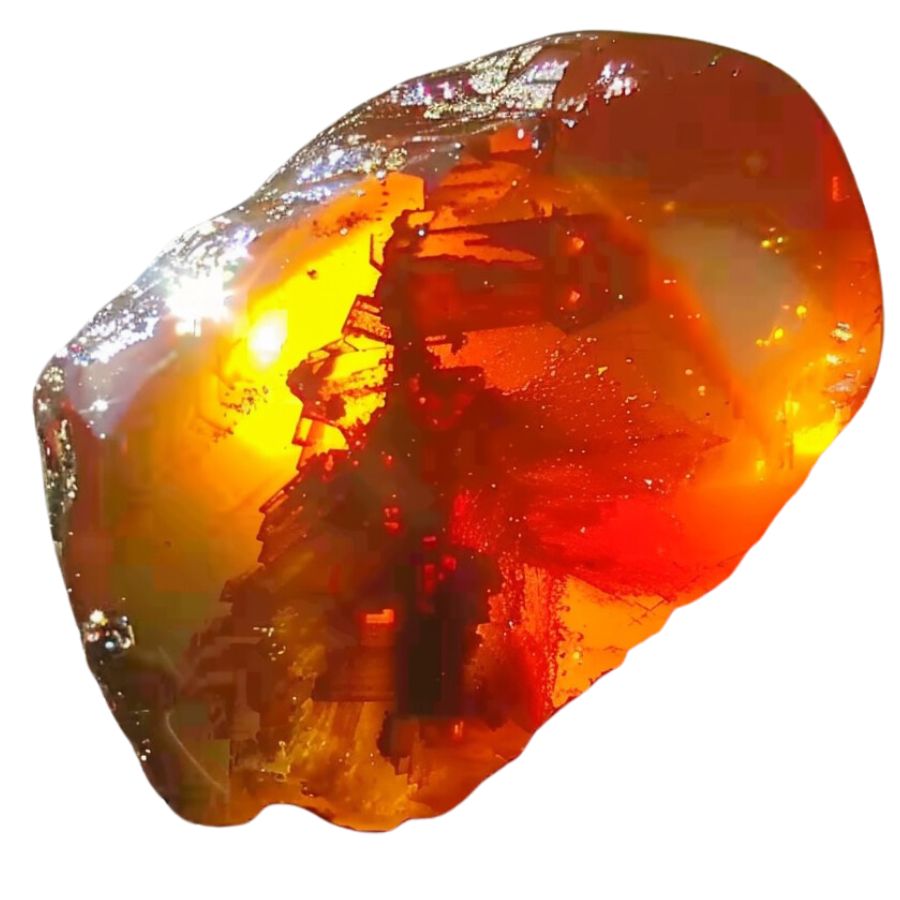
Fire Opal
Fire opal is known for its warm, vibrant colors, ranging from yellow and orange to deep red. Unlike precious opal, fire opal may or may not display the play-of-color, but its fiery body color makes it unique.
To identify fire opal, look for its bright, translucent to transparent appearance and the absence or presence of play-of-color within the warm hues.
Fire opal forms in volcanic regions where water rich in silica interacts with hot lava, filling cavities and fractures within the rock. Over time, the silica solution hardens, creating opal.
Visually, fire opal’s appeal lies in its vivid, flame-like colors that can be either uniform or exhibit internal flashes of color.
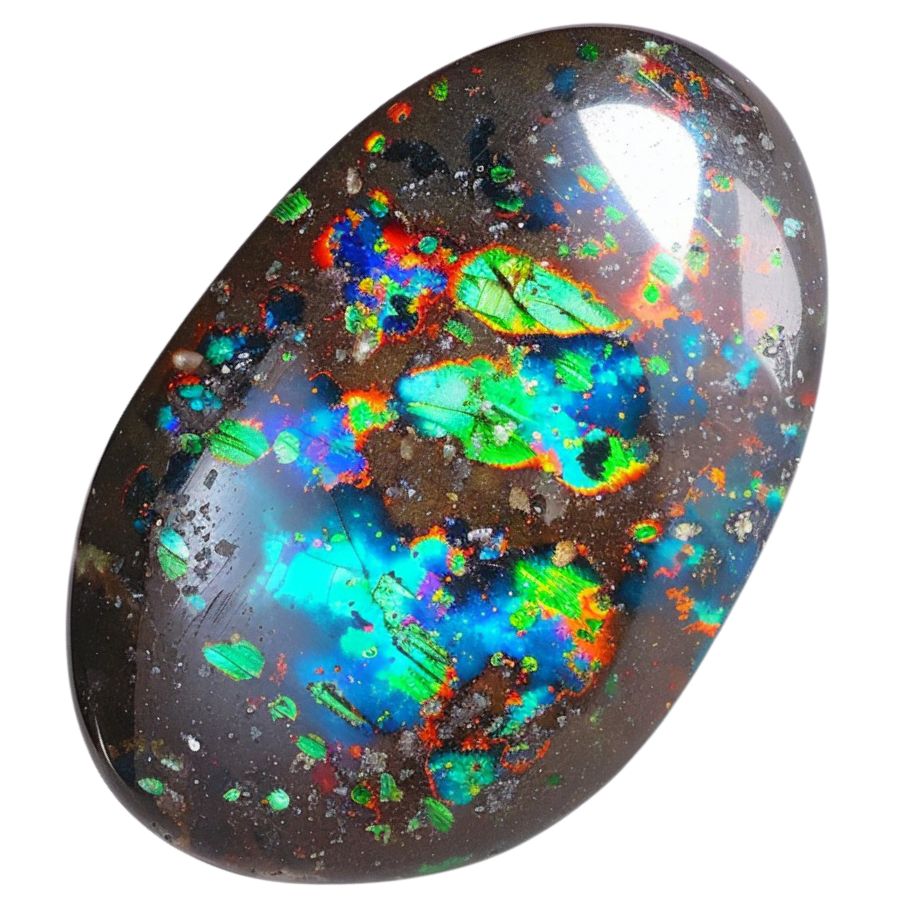
Boulder Opal
Boulder opal forms within the ironstone boulders of its host rock. Unlike other opals, boulder opal features precious opal veins intertwined with the natural rock, creating a beautiful contrast.
This opal is distinguished by its combination of colorful opal patches and the surrounding matrix, which can include ironstone or sandstone. To identify boulder opal, look for its vibrant play-of-color within the darker host rock, often showcasing brilliant blues, greens, and reds.
Boulder opal forms in sedimentary environments where silica-rich water infiltrates cracks and voids within ironstone or sandstone boulders. Over time, the silica hardens into opal, often creating thin seams or patches within the rock.
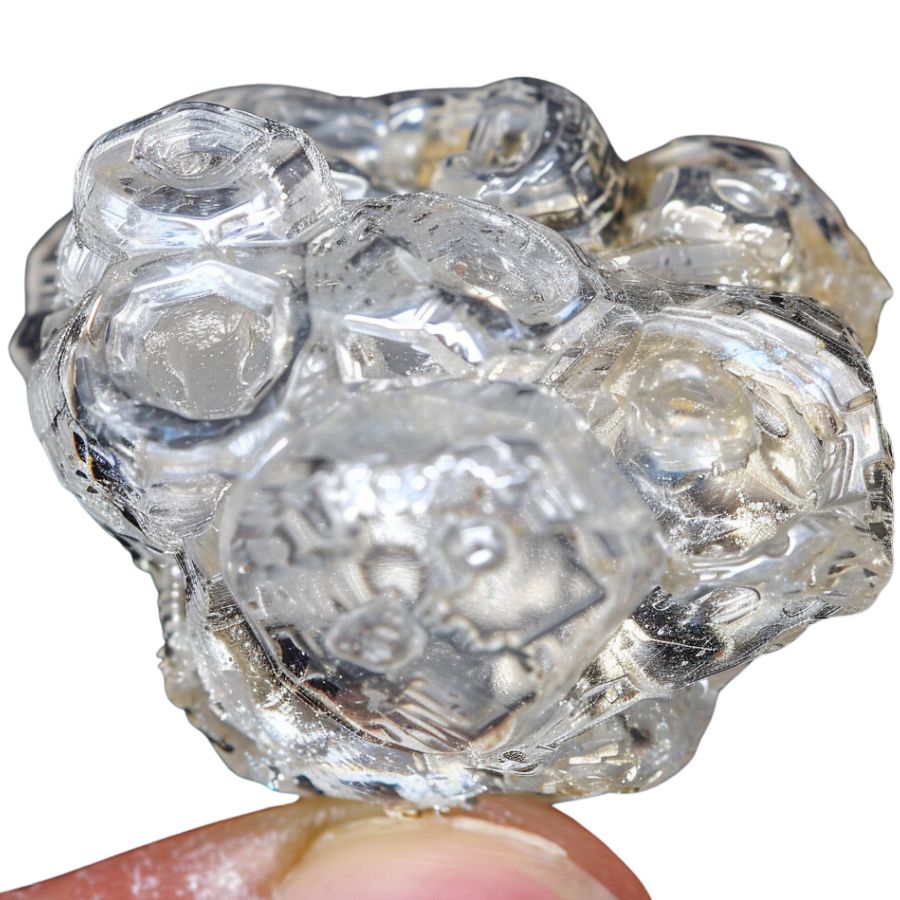
Hyalite Opal
Hyalite opal, also known as water opal, is a transparent to translucent type of opal that is distinctive for its glass-like appearance and lack of play-of-color. Unlike precious opal, which displays a rainbow-like iridescence.
You can identify hyalite opal by its clear to milky appearance, often with a slight green or blue fluorescence under UV light.
Hyalite opal forms in low-temperature hydrothermal environments, typically in volcanic regions. It precipitates from silica-rich fluids that fill cracks and voids in the host rock. This process can occur relatively quickly compared to other opal types.
Visually, hyalite opal resembles droplets of water or glass, often appearing as smooth, botryoidal (grape-like) formations. Its transparent nature makes it unique among opals, and its slight fluorescence adds to its allure.
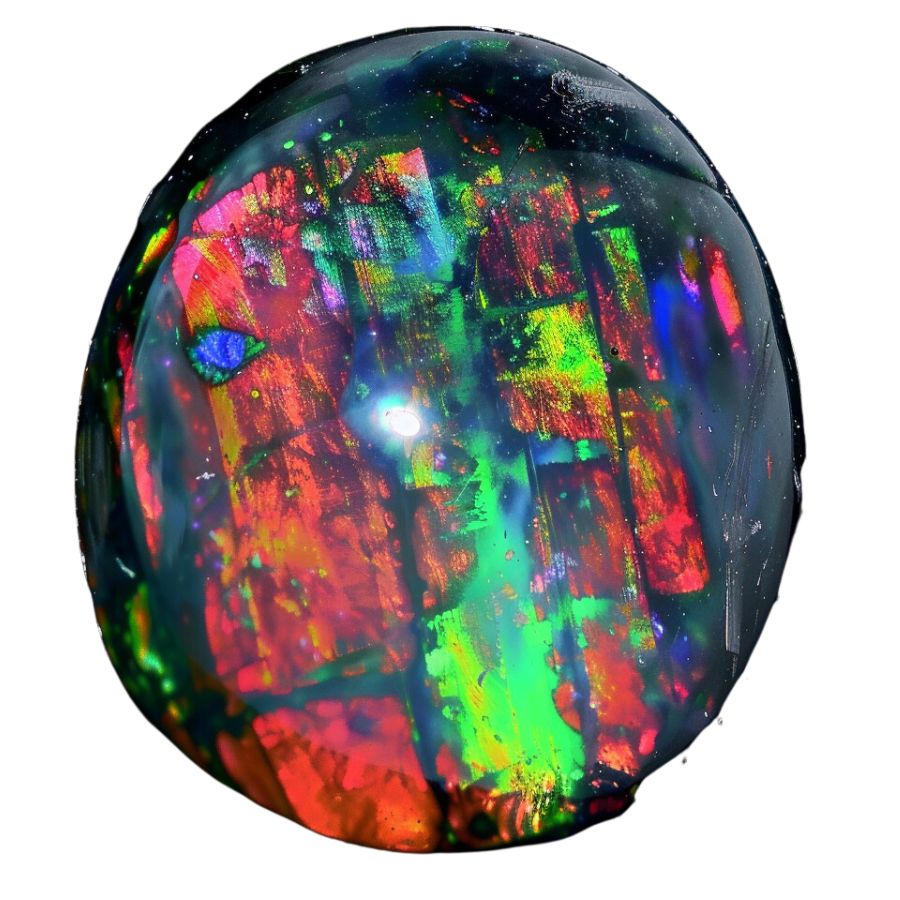
Black Opal
Black opal is a rare and highly prized variety known for its dark body tone, which enhances the vibrant play-of-color. Unlike other opals, black opal has a deep background color, ranging from dark gray to jet black, making the iridescent colors more striking.
To identify black opal, look for its intense, dark base color coupled with brilliant flashes of blues, greens, reds, and other hues.
The presence of iron and carbon contributes to its dark body color. In the United States, black opal is primarily found in the Virgin Valley of Nevada, known for its rich opal deposits.
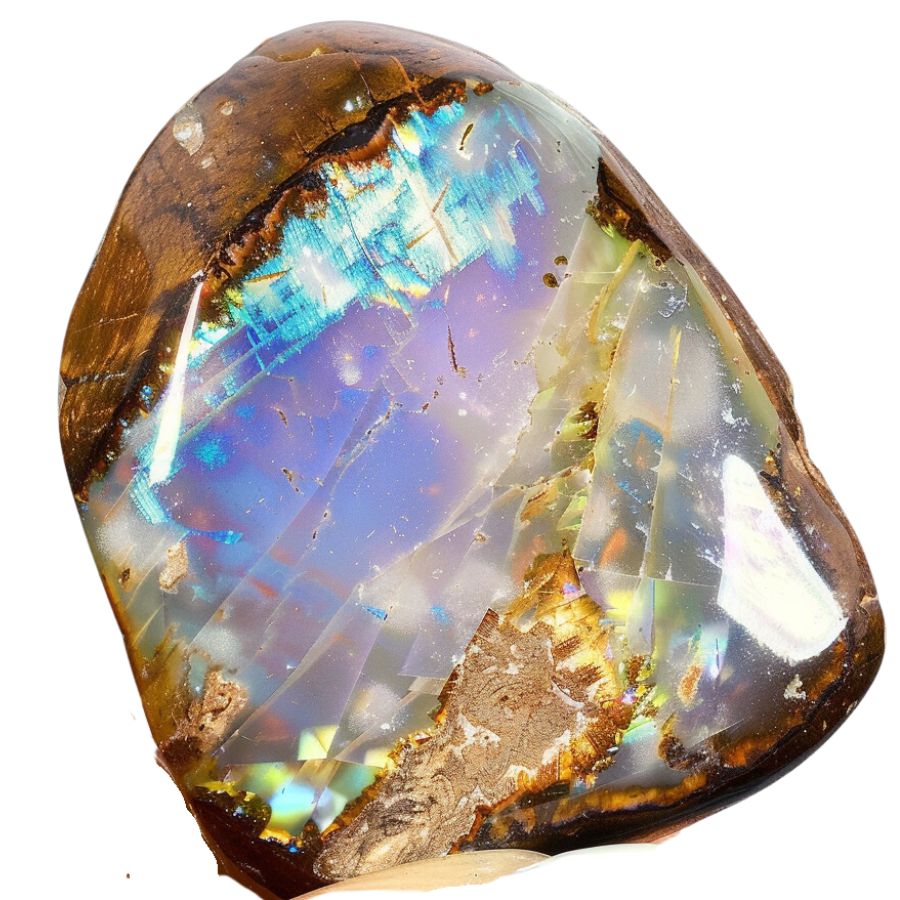
Crystal Opal
Crystal opal is known for its transparent to translucent body, which allows the play-of-color to shine through brilliantly. Unlike common opal, which is opaque, crystal opal’s clear or semi-clear nature enhances its vibrant internal colors.
To identify crystal opal, look for its see-through quality combined with flashes of color that can include blues, greens, reds, and more.
Its unique transparency sets crystal opal apart, making it a favorite among gem enthusiasts and collectors for its ethereal beauty.
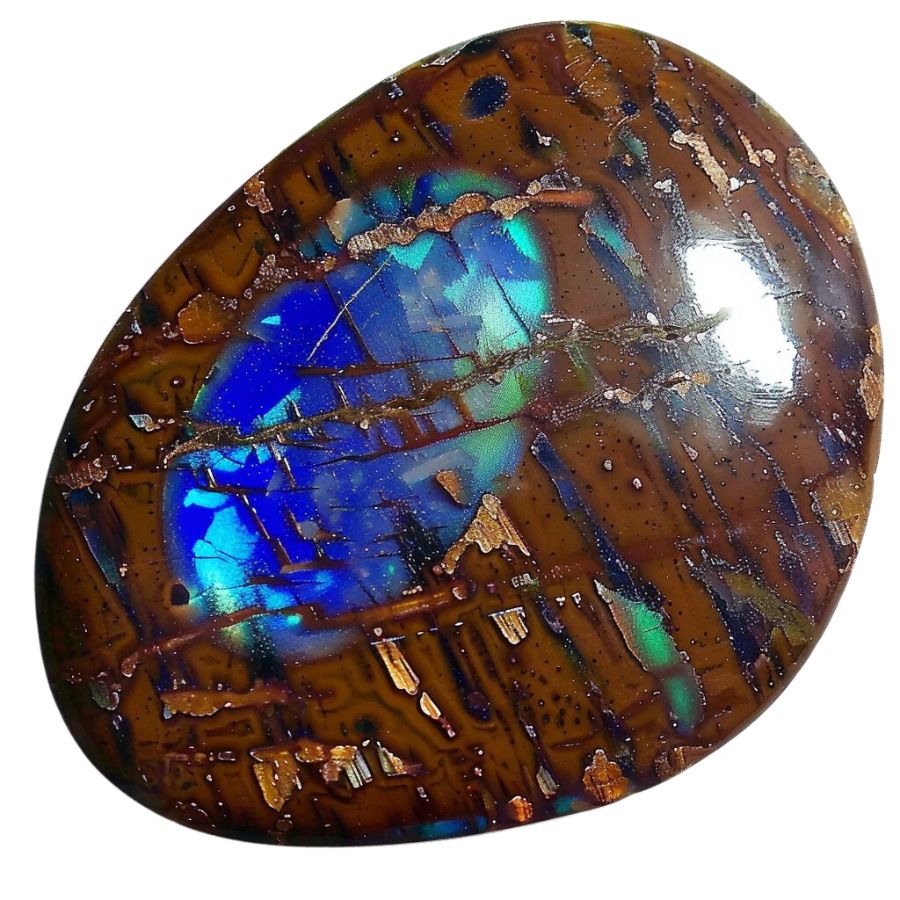
Wood Opal (Opalized Wood)
Opalized wood is a fascinating form of petrified wood where the organic material has been replaced by opal. Unlike other opals, opalized wood retains the original structure and texture of the wood, creating a unique blend of organic and mineral elements.
To identify opalized wood, look for its wood grain patterns and opalescent sheen, often displaying a range of colors from white and brown to vibrant reds and greens.
Opalized wood forms under specific conditions where wood is buried in silica-rich sediment. Over millions of years, the silica solution gradually replaces the organic wood material with opal, preserving the wood’s original structure in stunning detail.
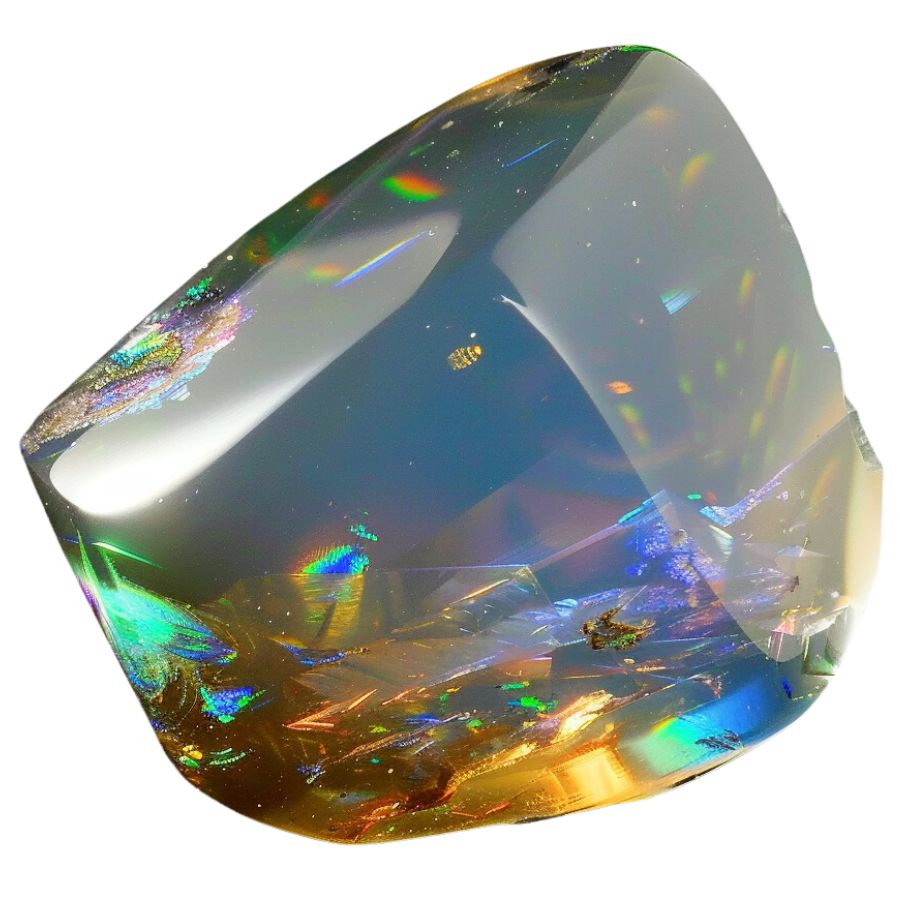
Contra Luz Opal
Contra Luz opal reveals its vibrant play-of-color when illuminated from behind. Unlike other opals, which display their colors through surface reflection, contra luz opal’s brilliance comes to life with transmitted light.
To identify contra luz opal, hold the gem against a light source and observe the internal flashes of color, which can include vivid reds, blues, greens, and purples.
This opal forms in volcanic environments where silica-rich water infiltrates cracks and cavities in the host rock. As the water evaporates, it leaves behind silica deposits that eventually solidify into opal.
Visually, contra luz opal appears nearly clear or milky when viewed without backlighting. However, when backlit, it displays stunning, colorful patterns that seem to glow from within.
What Rough Opal Looks Like
When you’re out looking for rough opal on your own it’s important to know what you’re looking for.
DON'T MISS OUT ON ANY GREAT FINDS!
While you're out searching for Geodes you're going to find a lot of other interesting rocks and minerals along the way. The last thing you want to do is toss out something really interesting or valuable. It can be easy to misidentify things without a little guidance.
We've put together a fantastic field guide that makes identifying 140 of the most interesting and valuable rocks and minerals you will find REALLY EASY. It's simple to use, really durable, and will allow you to identify just about any rock and mineral you come across. Make sure you bring it along on your hunt!
This is what you need to look out for:
Look for exteriors like this
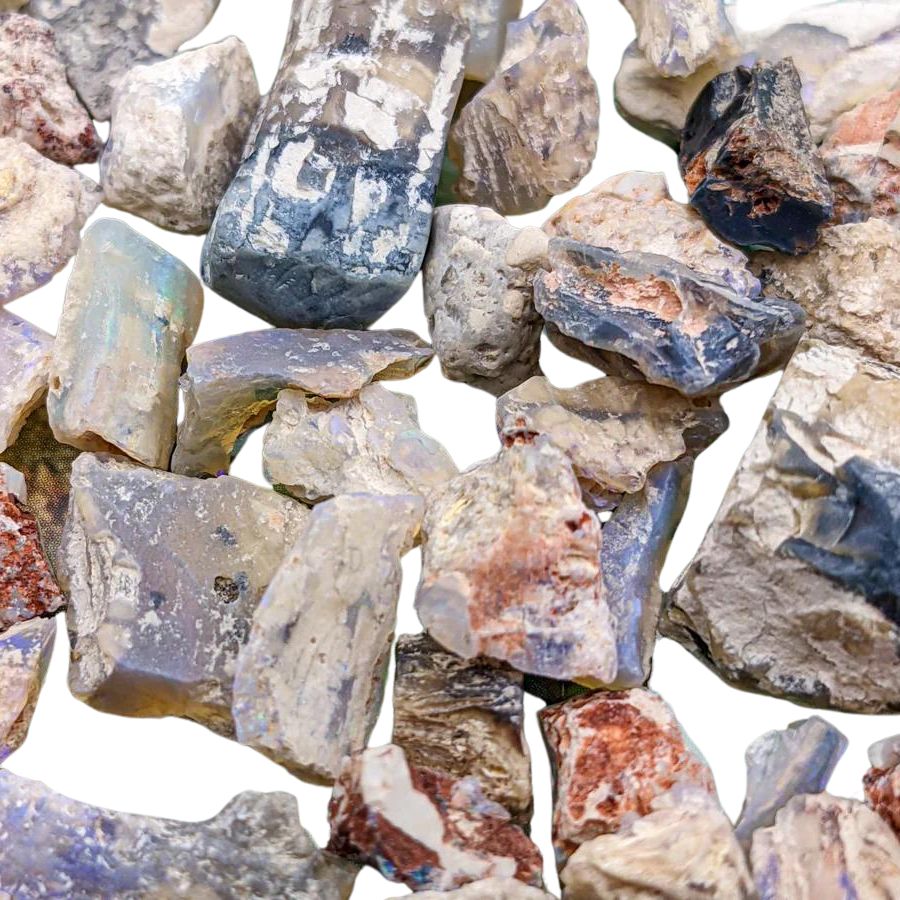
Look for play-of-color
Opal can display a range of colors, but what sets precious opal apart is its play-of-color—vivid flashes of multiple colors that change with the angle of light. Even in rough form, you might see hints of these colors peeking through.
Common opal lacks this feature and typically appears as a solid color like white, blue, or pink.
Check for a glassy or waxy luster
Opal often has a distinctive glassy or waxy luster. When you find a potential opal, examine its surface.
It should look shiny and smooth, almost like glass, even if it is still encased in a matrix or rough exterior.
Assess the density and weight
Opal is generally lighter than rocks of a similar size. When you pick up a piece of rough opal, it should feel lighter than expected.
Additionally, opal is relatively soft, with a Mohs hardness of 5.5 to 6.5, so it can be scratched more easily than quartz or other harder minerals.
A Quick Request About Collecting
Always Confirm Access and Collection Rules!
Before heading out to any of the locations on our list you need to confirm access requirements and collection rules for both public and private locations directly with the location. We haven’t personally verified every location and the access requirements and collection rules often change without notice.
Many of the locations we mention will not allow collecting but are still great places for those who love to find beautiful rocks and minerals in the wild without keeping them. We also can’t guarantee you will find anything in these locations since they are constantly changing.
Always get updated information directly from the source ahead of time to ensure responsible rockhounding. If you want even more current options it’s always a good idea to contact local rock and mineral clubs and groups
Tips on where to look
Once you get to the places we have listed below there are some things you should keep in mind when you’re searching:
Search in Sedimentary Rock Formations
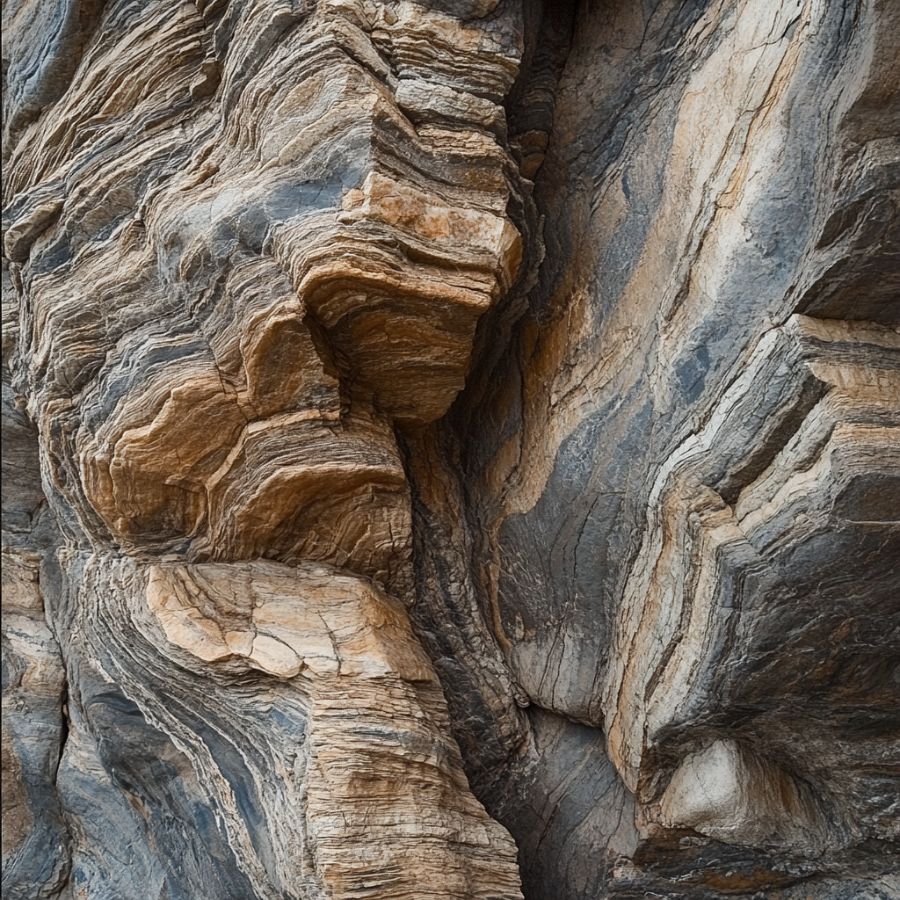
Opal can also form in sedimentary rock formations where silica deposits have accumulated over time.
Focus on areas with ancient lake beds or clay deposits, as these environments are conducive to opal formation.
Check Dry Creek Beds and Gullies
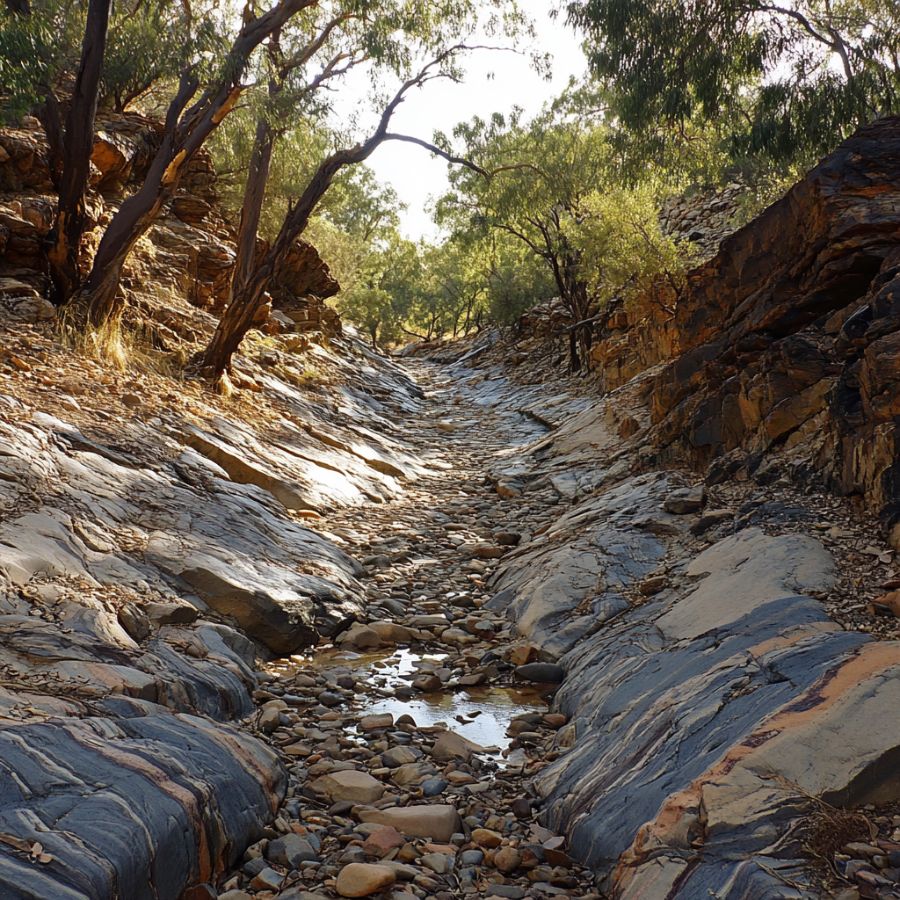
Dry creek beds and gullies can be excellent places to find opal, as water flow can erode and expose opal-bearing rocks.
Look for exposed rock and gravel in these areas, especially after rainfall or seasonal flooding.
Investigate Old Mining Sites
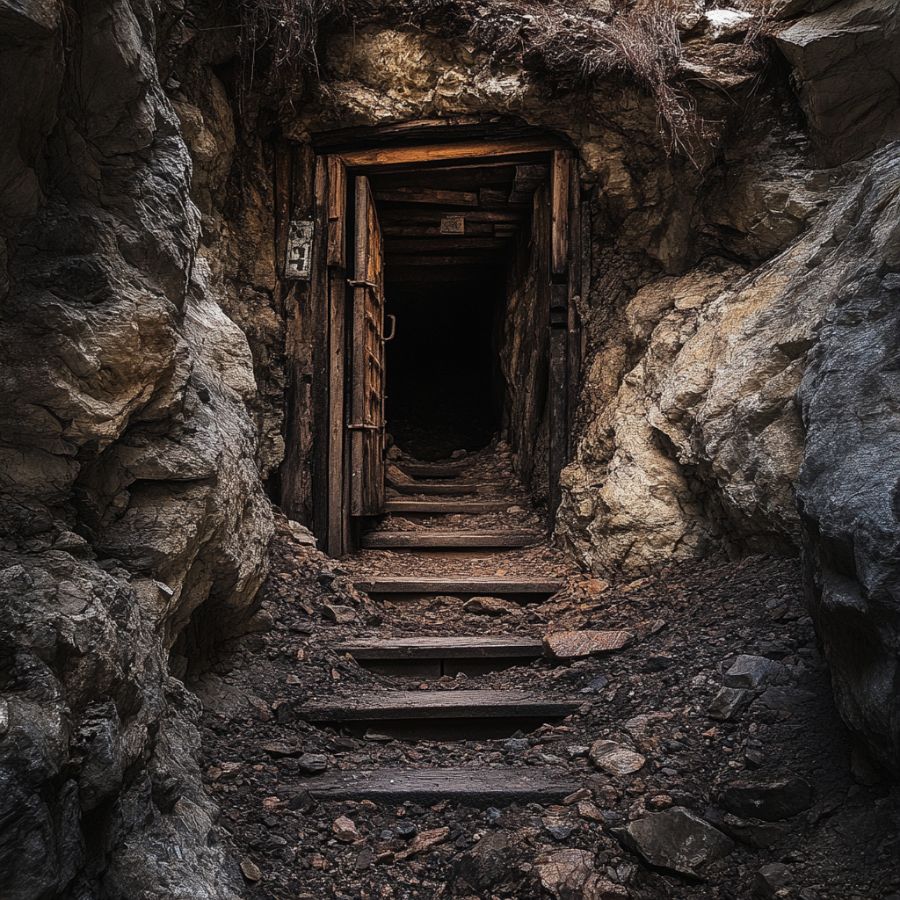
Abandoned or historical mining sites can be rich in opal and other minerals. These areas often have tailings and discarded rock that may still contain opal.
Always seek permission if the land is privately owned and follow safety guidelines.
Look for Indicator Minerals
Certain minerals can indicate the presence of opal. Look for rocks and soil containing ironstone, sandstone, or clay, as these materials often coexist with opal deposits.
Additionally, finding quartz or chalcedony can suggest nearby opal.
- The deep experience and understanding of our team about the area
- Recommendations from local groups and clubs
- How easy it is to get the a particular location
- Safety and potential hazards when collecting
- Weighing private and public locations
- The ability for both experienced and novice geode enthusiasts to find great samples
With these factors in mind we’ve been able to put together a fantastic list that just about anyone can use!
The Best Places To Find Opal in New Mexico
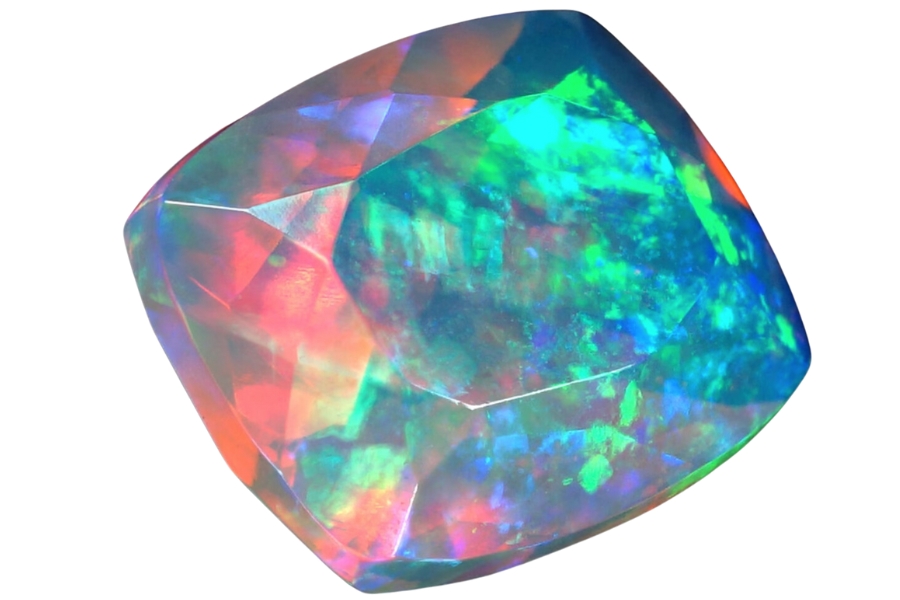
Let’s talk about the best places in the state to find opal. There are abundant places to find gems in New Mexico, but only a few are good for opal. A lot of people don’t know about these lovely spots!
Always Confirm Access and Collection Rules!
Before heading out to any of the locations on our list you need to confirm access requirements and collection rules for both public and private locations directly with the location. We haven’t personally verified every location and the access requirements and collection rules often change without notice.
Many of the locations we mention will not allow collecting but are still great places for those who love to find beautiful rocks and minerals in the wild without keeping them. We also can’t guarantee you will find anything in these locations since they are constantly changing.
Always get updated information directly from the source ahead of time to ensure responsible rockhounding. If you want even more current options it’s always a good idea to contact local rock and mineral clubs and groups
Black Canyon
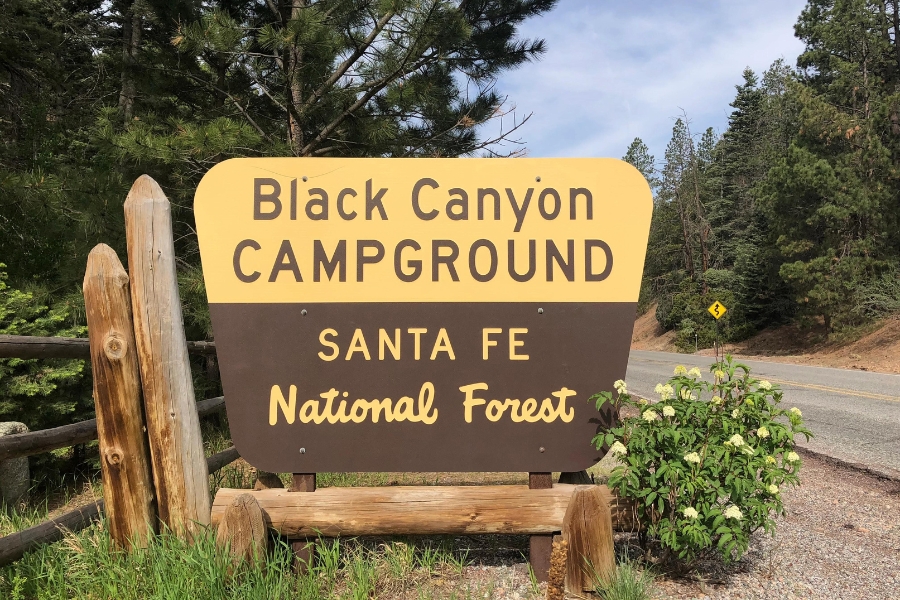
If you’re looking for opals, Black Canyon is a mysterious spot on a treasure map. Gem hunters love it because of its rough, desert environment. The weather conditions here have helped opals form for millions of years.
All over this area, volcanoes exploded a long time ago, and the lava that came out of them had a lot of cracks and holes in it. The holes were filled with water that carried silica. After a very long time, this mixture turned into opals.
Black Canyon is a popular place to look for opals because it’s less busy than other well-known gem sites and has much history from the old volcanoes. Fewer people are looking around, so you have a better chance of finding opals.
When you do find an opal, it’s super satisfying because you know the earth made it just right in this unique place. So if you’re up for a little challenge and a lot of fun, Black Canyon could be your ticket to discovering your opal treasure!
Before you bring anything back from New Mexico, make sure you know the most recent rules on collecting.
Where we found opal at Black Canyon
There are a lot of rocks and bushes in the canyon, which you can explore to find opals.
DON'T MISS OUT ON ANY GREAT FINDS!
While you're out searching for Geodes you're going to find a lot of other interesting rocks and minerals along the way. The last thing you want to do is toss out something really interesting or valuable. It can be easy to misidentify things without a little guidance.
We've put together a fantastic field guide that makes identifying 140 of the most interesting and valuable rocks and minerals you will find REALLY EASY. It's simple to use, really durable, and will allow you to identify just about any rock and mineral you come across. Make sure you bring it along on your hunt!
Gila National Forest
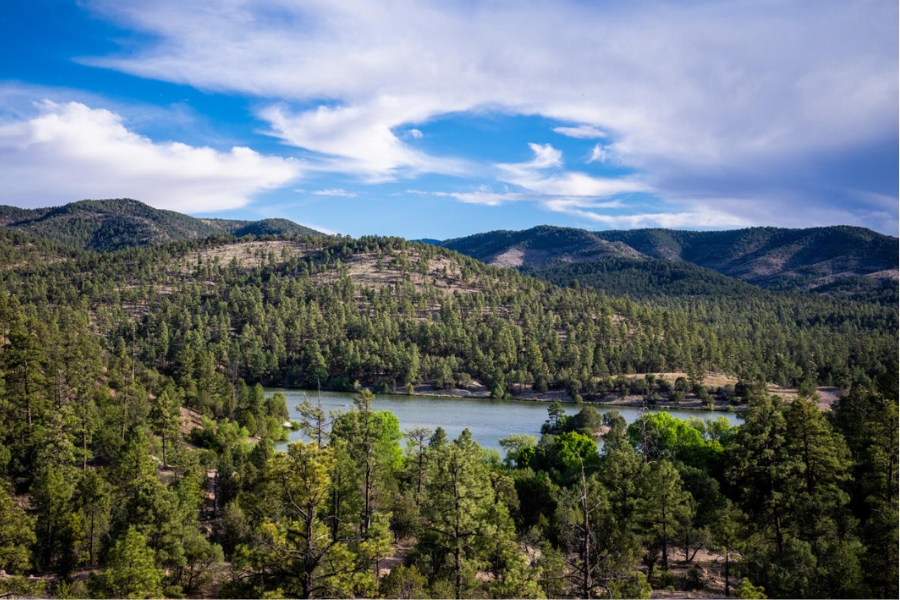
Gila National Forest i is a huge, wild place that nature lovers and rockhounds can use as a big playground. Over 2.7 million acres of woods, hot springs, and even old cliff dwellings can be found there.
But Gila is known for its secret gems, like the beautiful opal, which are great for people who want something sparkly. The mountains’ heat and pressure, along with the forest’s many mineral deposits, make it a great place to look for these valuable stones.
It’s a great place to look for opals because it’s both big and not as popular with tourists as other gem sites. Enjoy the beautiful scenery as you hike through the wilderness.
Gila National Forest could be a great place for your next outdoor treasure hunt if you’re up for an adventure and maybe want to find something shiny to take home!
Where we found opal at Gila National Forest
In the forest, the Round Mountain Rockhound Area and the Black Hills Rockhound Area are designated areas for rockhounding. There are a lot of silica-rich volcanic rocks in the Gila area, which is good for making opals.
You might find opals in volcanic rock. If you’re lucky, you might also discover opals in the forest’s secret cracks and crevices.
Chuska Mountains
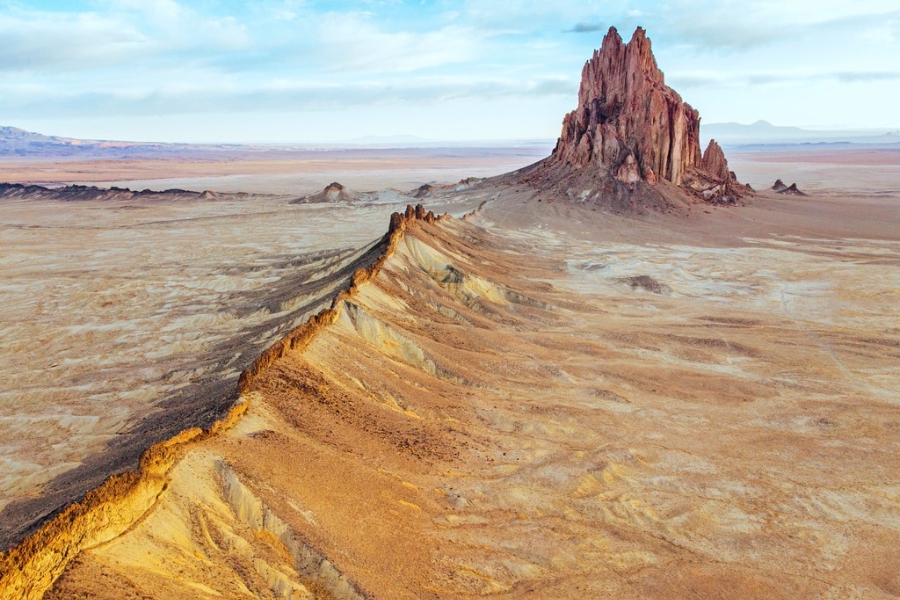
The Chuska Mountains are a beautiful range in the Navajo Nation. Their highest points are close to 10,000 feet. This broken-up hill is about 50 miles long and 10 miles wide.
The San Juan Basin surrounds it on the east and has high points like Roof Butte. There are thick forests of pine, spruce, and fir in these mountains. The higher rainfall and winter snowfall feed the trees and help the region’s water supplies in a big way.
The area is historically important because trees from the Chuskas were used to build the pueblos in Chaco Culture National Historical Park.
Where we found opal at Chuska Mountain
You can find opals near the mountain, with rocky terrains and past volcanic activity.
Point of Rocks
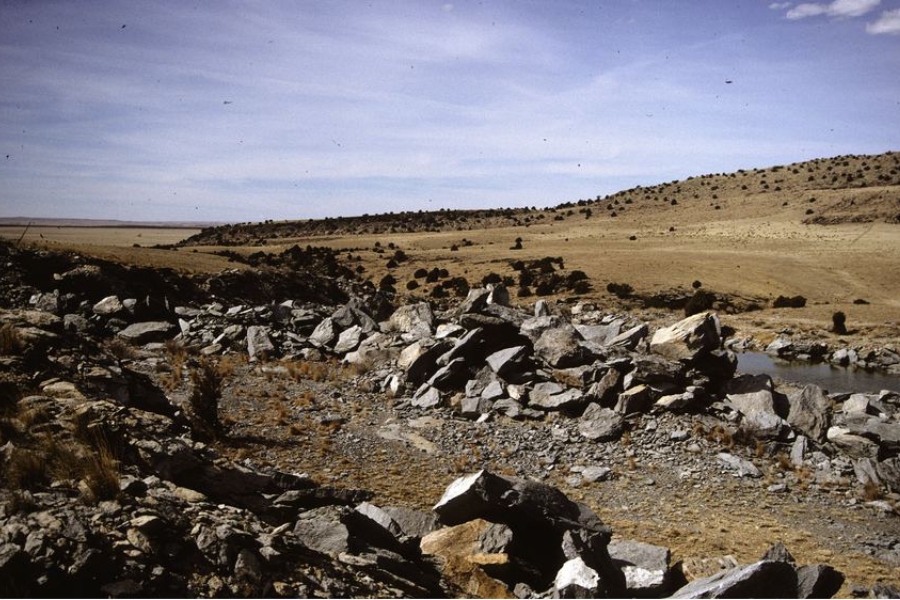
Point of Rocks is an amazing rock creation that has caught the attention of gem hunters and geologists. This one-of-a-kind place is famous for its opal mines, which make it a top choice for people looking for this beautiful and valuable stone.
It’s located in the southern part of the state, in the Mule Mountains, known for their opal-rich volcanic rocks. A fascinating process happens when silica-rich water seeps into cracks in volcanic rock and forms opals.
Point of Rocks is easy to get to and has a geological history full of opals, which makes it a great place for gemstone hunters and enthusiasts to discover. This mineral-rich area of New Mexico is even more appealing because of the stunning natural scenery.
Where we found opal at Point of Rocks
Opal can be found at Point of Rocks, primarily within the volcanic rock formations in the area. The opal deposits are typically located within cavities, fractures, or veins in these rocks.
Rockhound State Park
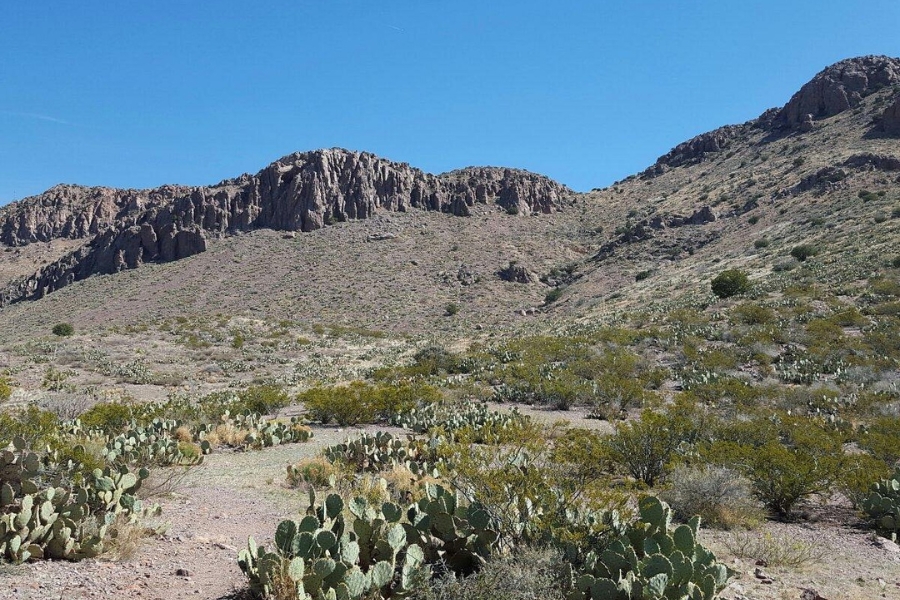
Rockhound State Park in southwestern New Mexico is a great place for people who love gemstones and are known for being great for opal digging. The varied landscape of this one-of-a-kind park’s 1,100 acres makes it a great place to look for these valuable stones.
Because the rocks in Rockhound State Park are good for forming opals, it’s a great place to go rockhounding. It’s open to new and expert rock hunters, and there are learning materials to help you identify and enjoy the gemstones you find there.
Rockhound State Park is a great place for rock and mineral lovers because it’s easy to get to, has beautiful desert scenery, and you might find opals there. This park is fun and educational for anyone interested in gemstones and geology, whether you’re looking for common opals or the highly sought-after fire opals.
Where we found opal at Rockhound State Park
There are beautiful volcanic rock formations, arroyos, and dry washes in the park’s desert scenery. You can look for opals in the park’s marked collecting areas or using simple tools like rock hammers and shovels.
Other Great Places To Find New Mexico Opal
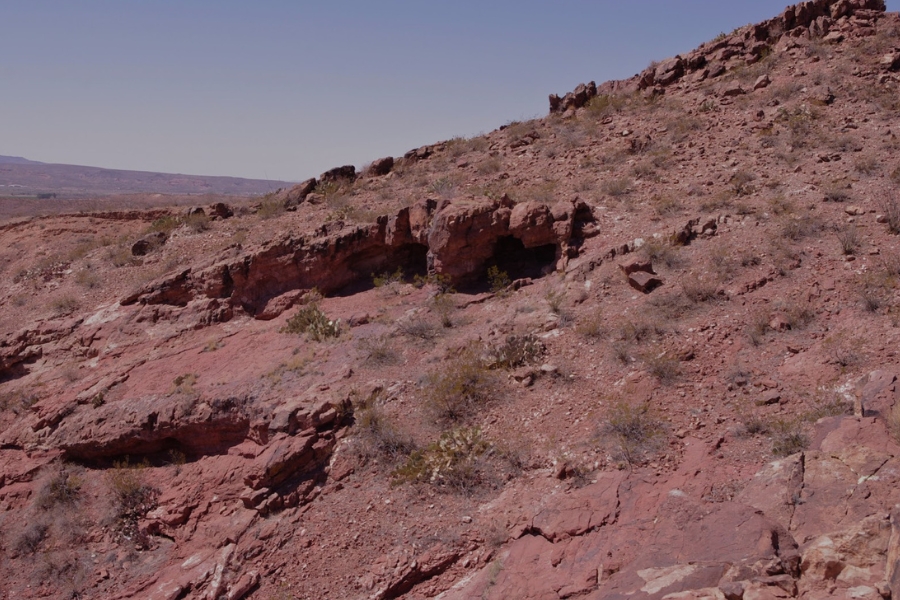
We’ll talk about the other places on our list next. They are listed below by county.
Our recommendations by county
| County | Location |
| Bernalillo | Isleta Indian Reservoir |
| Catron | Nugget Gulch |
| Dona Ana | Palm Park |
| Grant | Cross Mountain Road |
| Grant | Fort Bayard area surfaces |
| Hidalgo | Hatchet Mountains |
| Hidalgo | Peloncillo Hills |
| Otero | Wind Mountain |
| Otero | Cornudas Mountain |
| Sandoval | Battleship Rock |
| Sandoval | Upper Percha Creek |
| Socorro | Socorro Hot Springs |
Common Opal-Hunting Questions
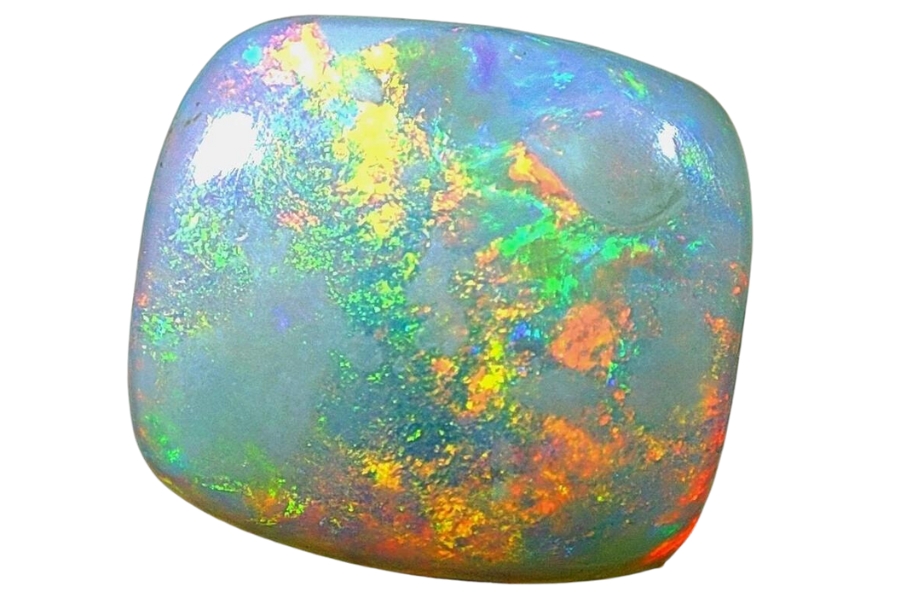
When people want to know where to find opal in New Mexico, they often ask the following questions:
Is it illegal to collect opal in New Mexico?
Collecting opals in New Mexico is generally legal, but there are important regulations and considerations to remember.
On public lands, like those run by the Bureau of Land Management (BLM) or state parks, you can usually collect opals for personal, non-business use. You may have to get a free or cheap pass, though, and there are usually limits on how much you can collect.
You need permission from the owners to collect opals on private property. It’s against the law to enter private land without permission.
Even though collecting opals is legal in many parts of New Mexico, it’s important to find out the exact rules and laws for the place you want to visit.
Different types of land and management agencies may have different rules and laws, so it’s best to call or visit the websites of the relevant officials to get the most up-to-date information before going on a collecting trip.
The Best Places To Buy Opal In New Mexico

Some people don’t like searching for opal outside because they must work hard and get dirty. This list is for you if you don’t want to do that.
Here are some of our favorite places in the area to look for and buy opal:
- Ancients of Days – 127 N Main St, Roswell, NM 88203, United States
- Chimayo Rocks – 225 N Paseo De Onate, Española, NM 87532, United States
- La Tierra Mineral Gallery – 124 Bent St, Taos, NM 87571, United States
- Liberty Gem & Minerals – 1323 San Mateo Blvd NE, Albuquerque, NM 87110, United States
- Meteorite, Mineral & Fossil Gallery – 110 Don Gaspar Ave, Santa Fe, NM 87501, United States


